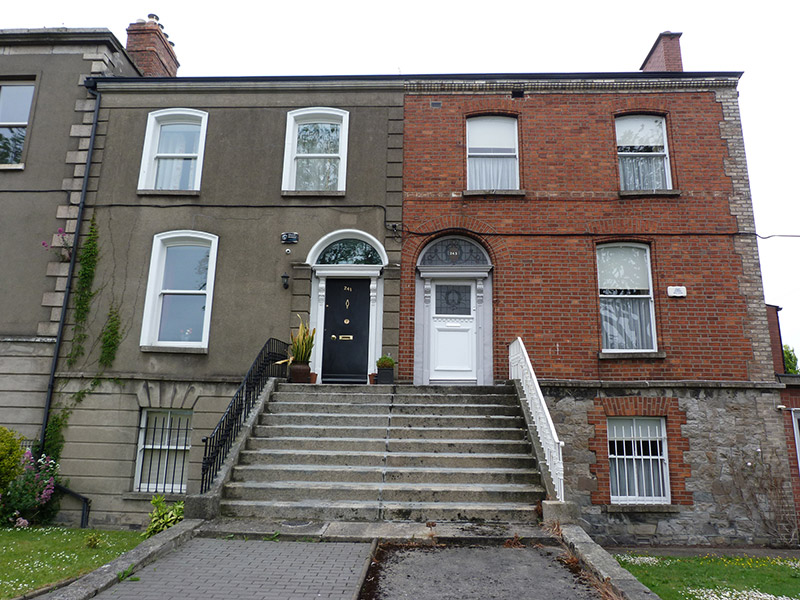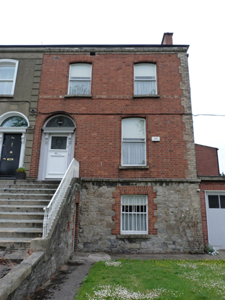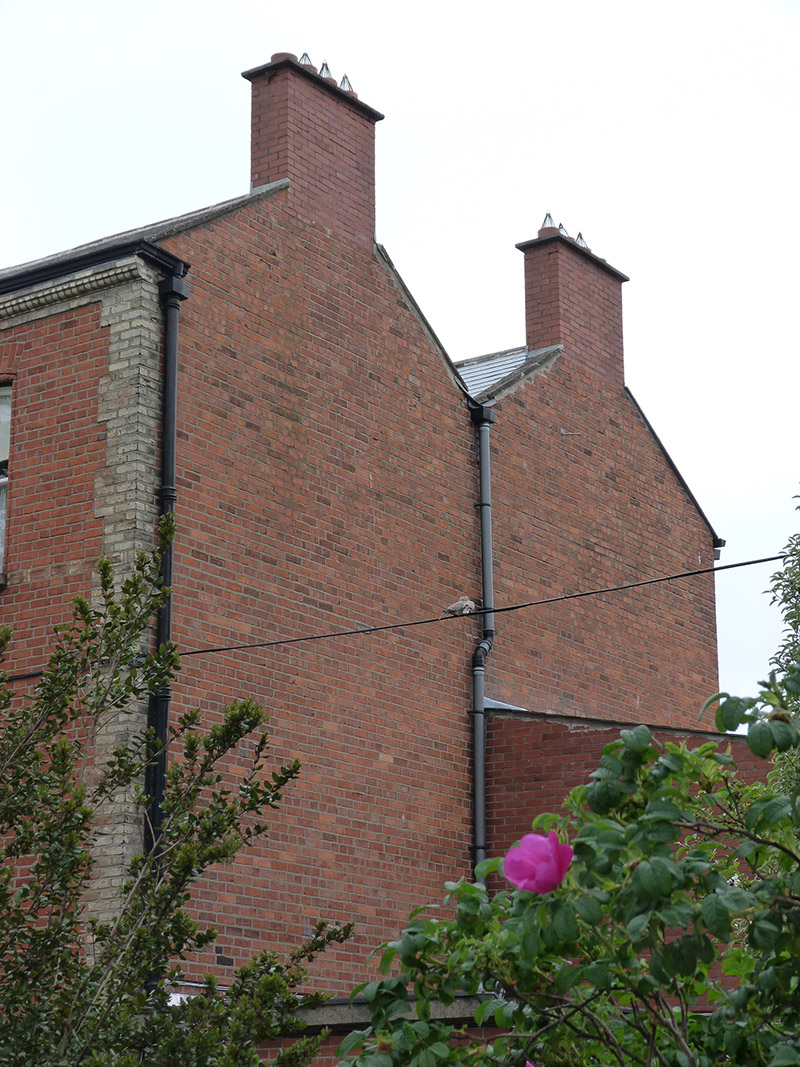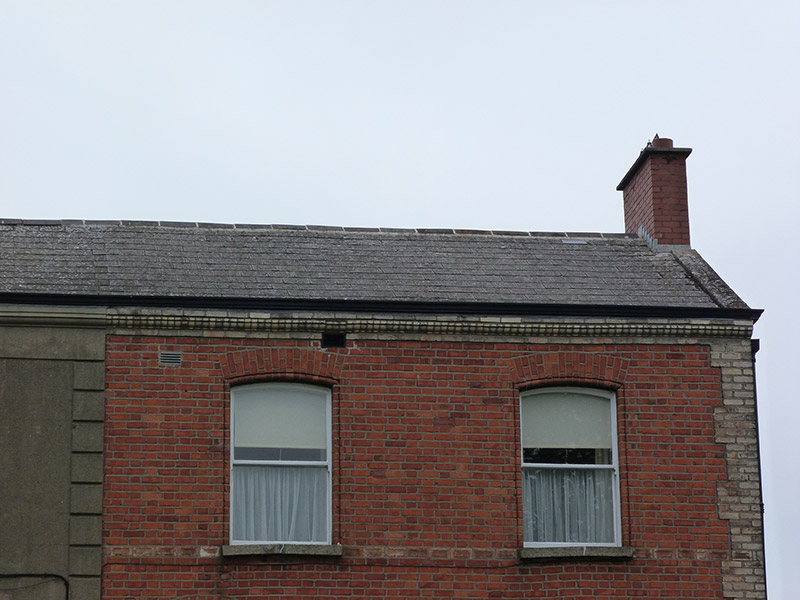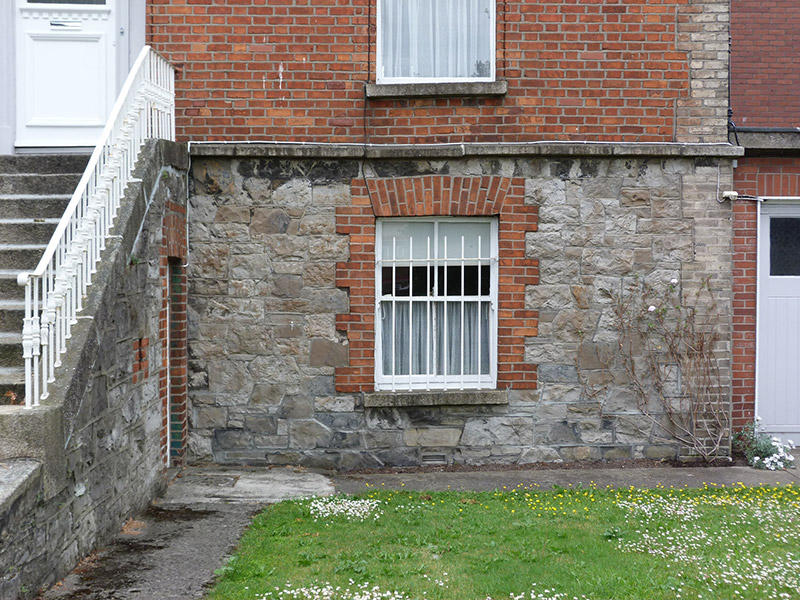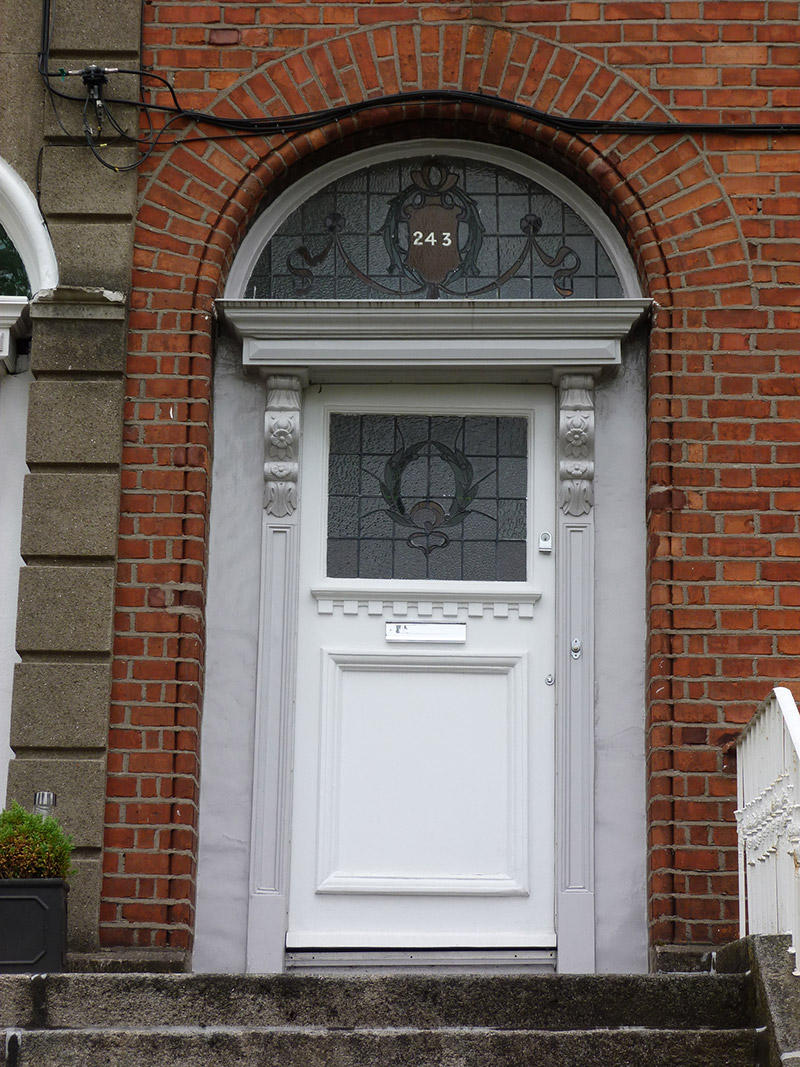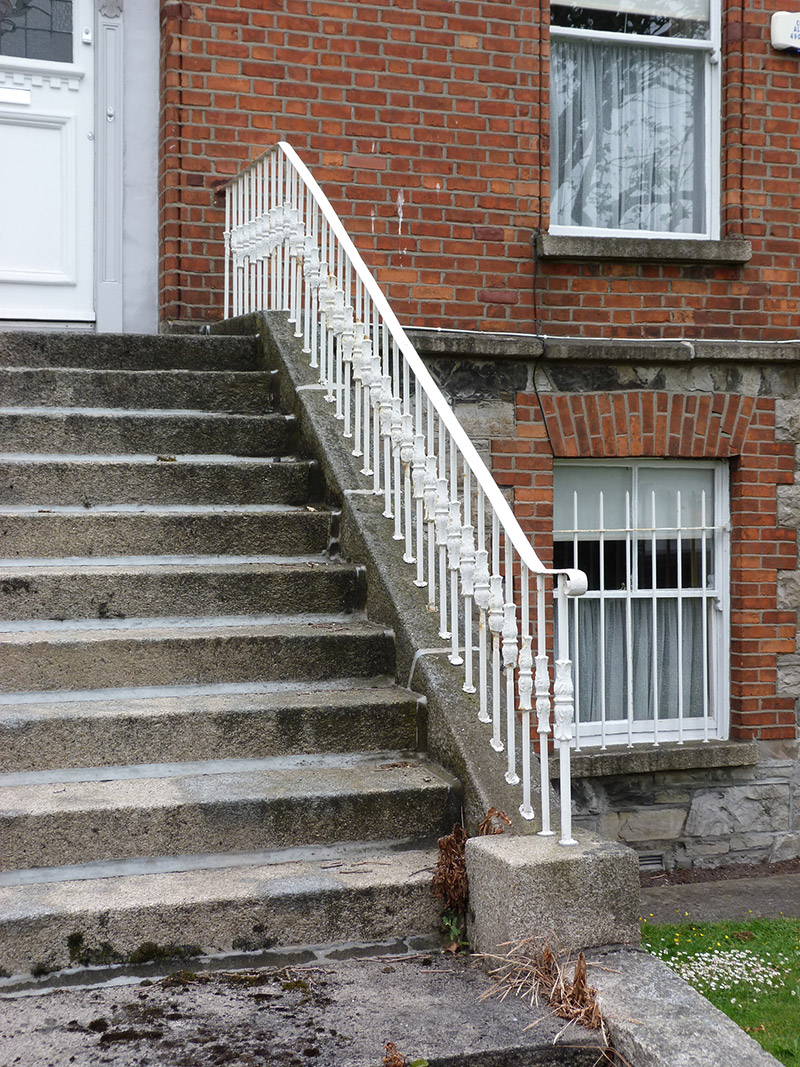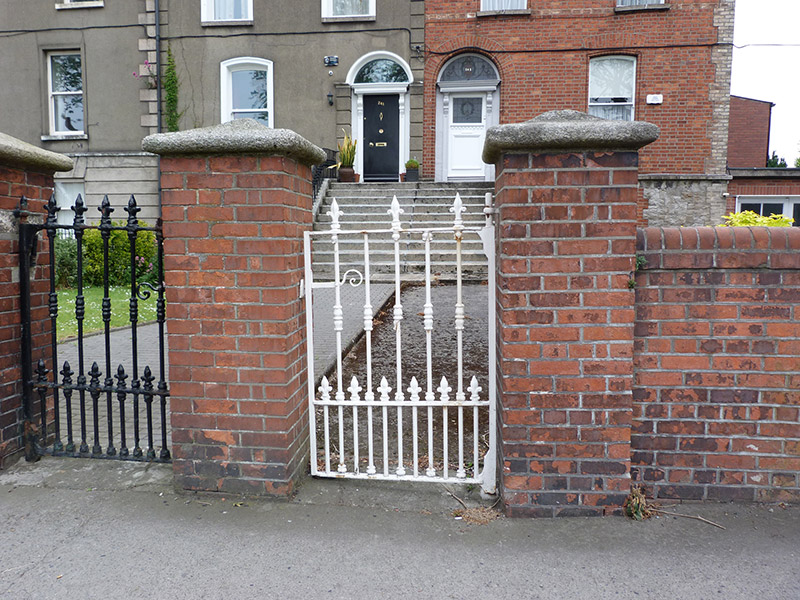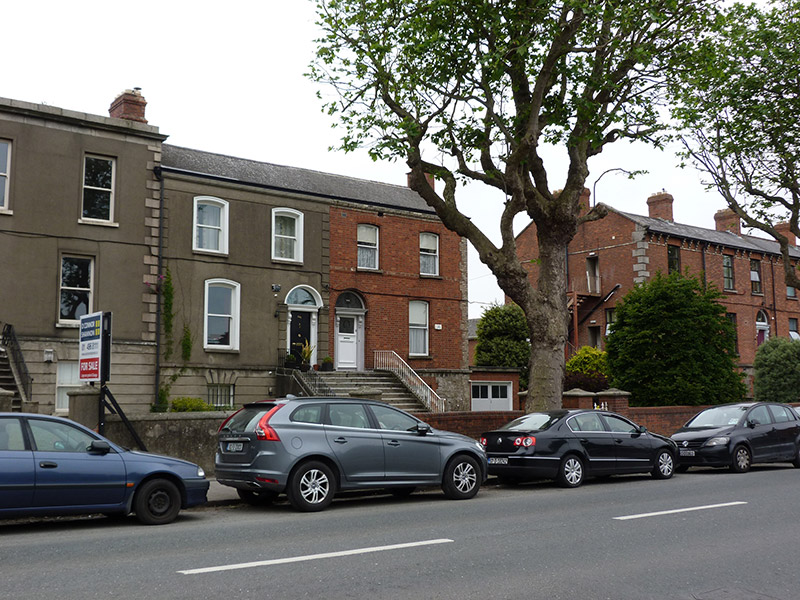Survey Data
Reg No
50130283
Rating
Regional
Categories of Special Interest
Architectural, Artistic
Previous Name
Royal Terrace
Original Use
House
In Use As
House
Date
1875 - 1885
Coordinates
314362, 235633
Date Recorded
05/06/2018
Date Updated
--/--/--
Description
End-of-terrace two-bay two-storey house over raised basement, built c. 1880 as one of pair with No. 241 to west, having single-storey garage to side (east) elevation and return to rear. M-profile pitched roof, with replacement red brick chimneystacks having clay pots to east end, gauged yellow brick eaves course and profiled cast-iron and replacement uPVC rainwater goods. Red brick walling to upper floors, laid in Flemish bond, over granite plinth course with squared uncoursed limestone walls to basement having yellow brick quoins to east end; red brick laid in English garden wall bond to side elevation; and rendered to rear. Camber-arch window openings to upper floors, with moulded brick reveals, granite sills and one-over-one pane timber sliding sash windows; square-headed opening to basement with red brick block-and-start quoins, granite sill and two-over-two pane timber sliding sash window with wrought-iron window-guard. Round-headed principal doorway with moulded brick surround, carved timber doorcase comprising panelled pilasters having scrolled brackets supporting timber cornice and stained-glass fanlight and replacement timber panelled door with stained-glass panel; square-headed doorway to basement with red brick block-and-start quoins. Flight of eleven granite steps and granite platform, with decorative cast-iron handrail to east side. Red brick wall to front boundary, laid in English garden wall bond, with moulded brick coping, and pedestrian gateway with red brick piers having granite caps and decorative cast-iron gate.
Appraisal
This well-built house is one of a pair of late nineteenth-century houses with similar parapet heights and fenestration patterns. The combination of squared Calp limestone and red brick adds visual and textural interest to the facade. The use of gauged yellow brick detailing to the eaves places the house in a late nineteenth-century context. Retention of timber sash windows and a doorway with stained-glass elements, enhances the historic appearance of the house. The North Circular Road was laid out in the 1780s to create a convenient approach to the city. It developed slowly over the following century with little development west of Phibsborough till the 1870s.
